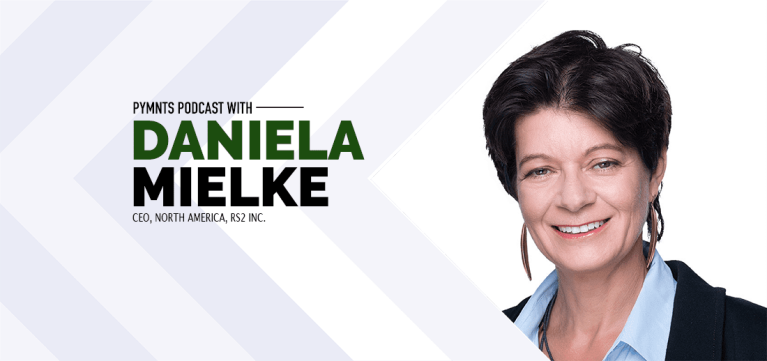How PayFacs And ISVs Can Survive (And Thrive) In Uncertain Times

The impact of COVID-19 will likely be felt over months and years, altering the business landscape in ways yet imagined.
And for the payment facilitators (PayFacs) and independent software vendors (ISVs) that serve merchants through software and services that help those firms to accept payments, as Daniela Mielke, CEO of RS2 Software, told Karen Webster, the ripple effects will be enormous.
“We know from previous downturns and recessions that the payment industry follows the overall market and consumer spend,” Mielke said, in describing overall trends. “So if consumer spend is going down, the payment industry will feel that decline.”
The recent unemployment data – released Thursday by the Labor Department — serves as a bellwether for that decline.
Unemployment claims for the period that ended March 13, which show the initial impacts of COVID-19, show filings for the week at 281,000, where 220,000 had been expected, and spiked from 211,000 from the previous week.
It stands to reason that, as individuals lose their employment (even if paychecks continue as part of government programs aimed at fighting the economic impact of the virus), and they are faced with uncertainty, they will throttle back on spending.
“This is not an economic or financial crisis,” said Mielke. “This is more like a natural disaster, and once we are over this, the economy will pick up again.” At least for now, she said, ISVs and PayFacs are seeing more chargebacks as consumers push for refunds.
Beyond the near term headwinds, according to Mielke, beyond the spending declines, lies a tailwind.
The ongoing shifts to digital payments (particularly mobile transactions) and omnichannel experiences will continue, predicted Mielke. As she noted anecdotally, in an effort to reduce physical contact, and risks of contracting the virus, more individuals may embrace contactless payments. Across the nation, too, a growing number of restaurants are offering mobile order ahead and pick up at curb service.
Most immediately, though, as consumer spending drops, merchants face top-line pressure and may have to shutter. The ripple effects will certainly cause stress the companies that make it possible for those merchants to accept payments in the first place.
PayFacs, said Mielke, may face considerable fallout. They are at higher risk than other stakeholders in the payments ecosystem because they take on merchant risk — losing customers as those businesses close.
“The PayFac takes on risk very much like an acquirer takes on risk,” Mielke. And at this moment, every industry is vulnerable. But the carnage is most vulnerable across the travel, hospitality, restaurants and entertainment verticals — basically any vertical dependent on people gathering socially.
“In the end,” Mielke continued, “a lot of these PayFacs are pretty good at pushing [risk] down to the sub-merchants. So I think that the ones that are really going to see the brunt of all this are the sub-merchants,” especially those firmly entrenched in what she termed “experience verticals” already seeing a slowdown, if not outright disruption.
She noted the example of Airbnb, which is refunding deposits, but it is the host that is not getting paid. Other industries such as ride-hailing (where Uber has relatively low fixed costs, and is diversified), will see suffering borne by the drivers, she added.
Some Advice
For those PayFacs operating in the most affected verticals, Mielke offered some advice.
“Either you transform, and take care of your customers, or if that is not possible — if you are in the travel vertical right now, you’re not going to have business for the next six months or longer — then you need to come up with something new.”
Doing the right thing by the sub-merchants, she said, means offering advice to merchants about how to apply for SBA emergency loans, or how to seek out lease abatements, for example.
Or these same PayFacs can acquire new sub-merchants, helping broaden their own payments offerings to end users, where the local farmer’s market can accept PayPal, for example, or help a restaurant convert the day’s tips into a digital disbursement that helps waitstaff meet their own financial needs.
Offering advice and value-added service is critical, she said, because once the economy recovers, those PayFacs that are still in business will need those sub-merchants again.
Asked by Webster about the vulnerabilities of ISVs, Mielke said that “they don’t take the risk of the payment so they are somewhat less vulnerable [than PayFacs]. But let’s not forget that certain ISVs, and PayFacs, have software services and payments is just an enabling capability. So all of these players, if they continue to solve a problem for their customer, they will be fine.”
In the current downturn, said Mielke, the PayFac or ISV that is diversified will be better positioned to weather the storm. But regardless of verticals served, all players would do well to look at cost structure and go to market strategies in a way that will enable them to emerge from a post COVID-19 world in a position of strength (she mentioned healthcare payments as one promising vertical).
As Mielke told Webster, “I do think that with any challenge there are also opportunities.”



